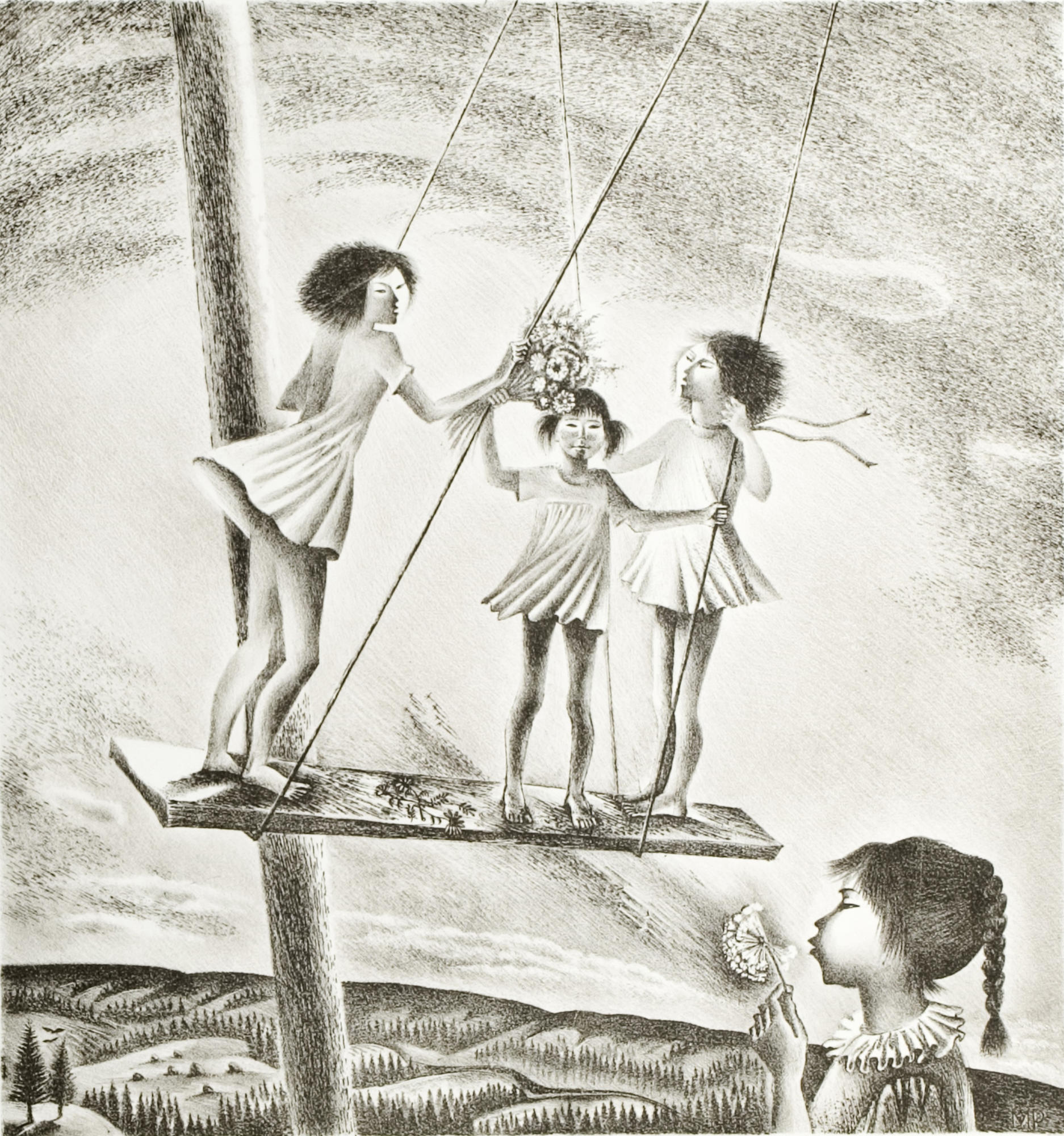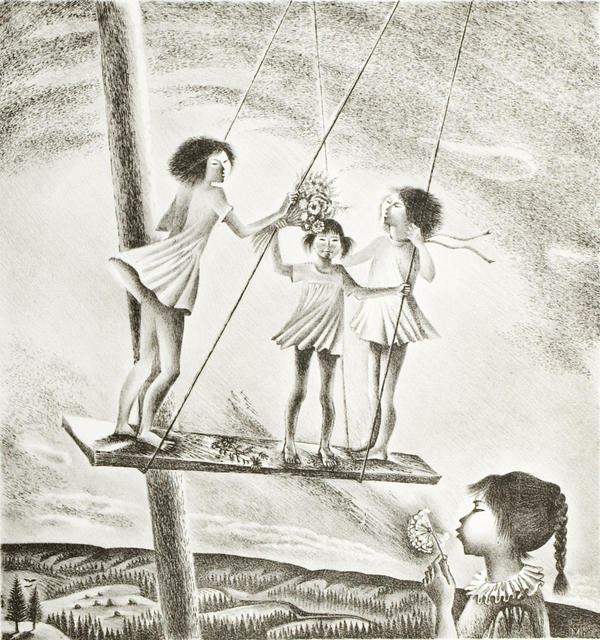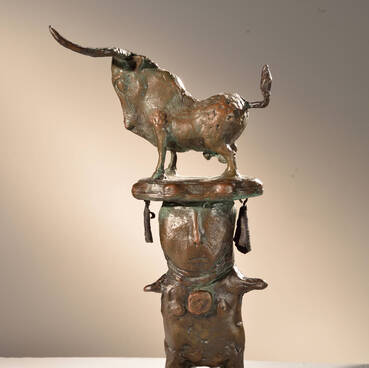Maria Rakhleeva addresses the eternal topics of art — human and nature, motherhood and family, native land — Yakutia. The author’s artistic language is expressed in simple, harmonious and clear images, which she got from reflections on inseparable relationship between people and nature. Rakhleeva devoted most of her works to enthusiastic and happy world of children.
Rakhleeva created “Swing” lithography in 1977. She portrayed four girls running out in the field on a summer day. One of them stands in the foreground, closer to the audience, holding a dandelion in her hands. The other children are swinging. A spacious landscape opens in the distance — a hilly valley and coniferous forest.
Yakut culture has always associated a child’s figure with continuation of life, purity and sincerity. The author complements the traditional image system — she views the swing as a symbol of carefree childhood, fun and joy. The dandellion means lightness, freedom and light. This sunny flower also represents childhood dreams, happy thoughts and the desire for joy.
Rakhleeva’s art is based on memories directly experienced by her. She always tenderly remembers her childhood as: transparent lakes, fragrant fields, warm summer rains, and kind people. Echoes of these first impressions of life are embodied in many of the artist’s graphic sheets. Therefore, the main themes of her works come from an endless source of inspiration, her homeland.
Rakhleeva often uses lithography, a printing method transferring the ink under pressure from a printing form on to the paper. The artist first turned to this method in the 1970s at the beginning of her career. She graduated from Graphic Department of the Moscow State Art Institute named after V.I. Surikov, and completed a series of lithographs — ‘Homeland’ — as her graduation work. The works were highly appreciated, and exhibited in many major exhibitions in the country and abroad.
Rakhleeva created “Swing” lithography in 1977. She portrayed four girls running out in the field on a summer day. One of them stands in the foreground, closer to the audience, holding a dandelion in her hands. The other children are swinging. A spacious landscape opens in the distance — a hilly valley and coniferous forest.
Yakut culture has always associated a child’s figure with continuation of life, purity and sincerity. The author complements the traditional image system — she views the swing as a symbol of carefree childhood, fun and joy. The dandellion means lightness, freedom and light. This sunny flower also represents childhood dreams, happy thoughts and the desire for joy.
Rakhleeva’s art is based on memories directly experienced by her. She always tenderly remembers her childhood as: transparent lakes, fragrant fields, warm summer rains, and kind people. Echoes of these first impressions of life are embodied in many of the artist’s graphic sheets. Therefore, the main themes of her works come from an endless source of inspiration, her homeland.
Rakhleeva often uses lithography, a printing method transferring the ink under pressure from a printing form on to the paper. The artist first turned to this method in the 1970s at the beginning of her career. She graduated from Graphic Department of the Moscow State Art Institute named after V.I. Surikov, and completed a series of lithographs — ‘Homeland’ — as her graduation work. The works were highly appreciated, and exhibited in many major exhibitions in the country and abroad.



